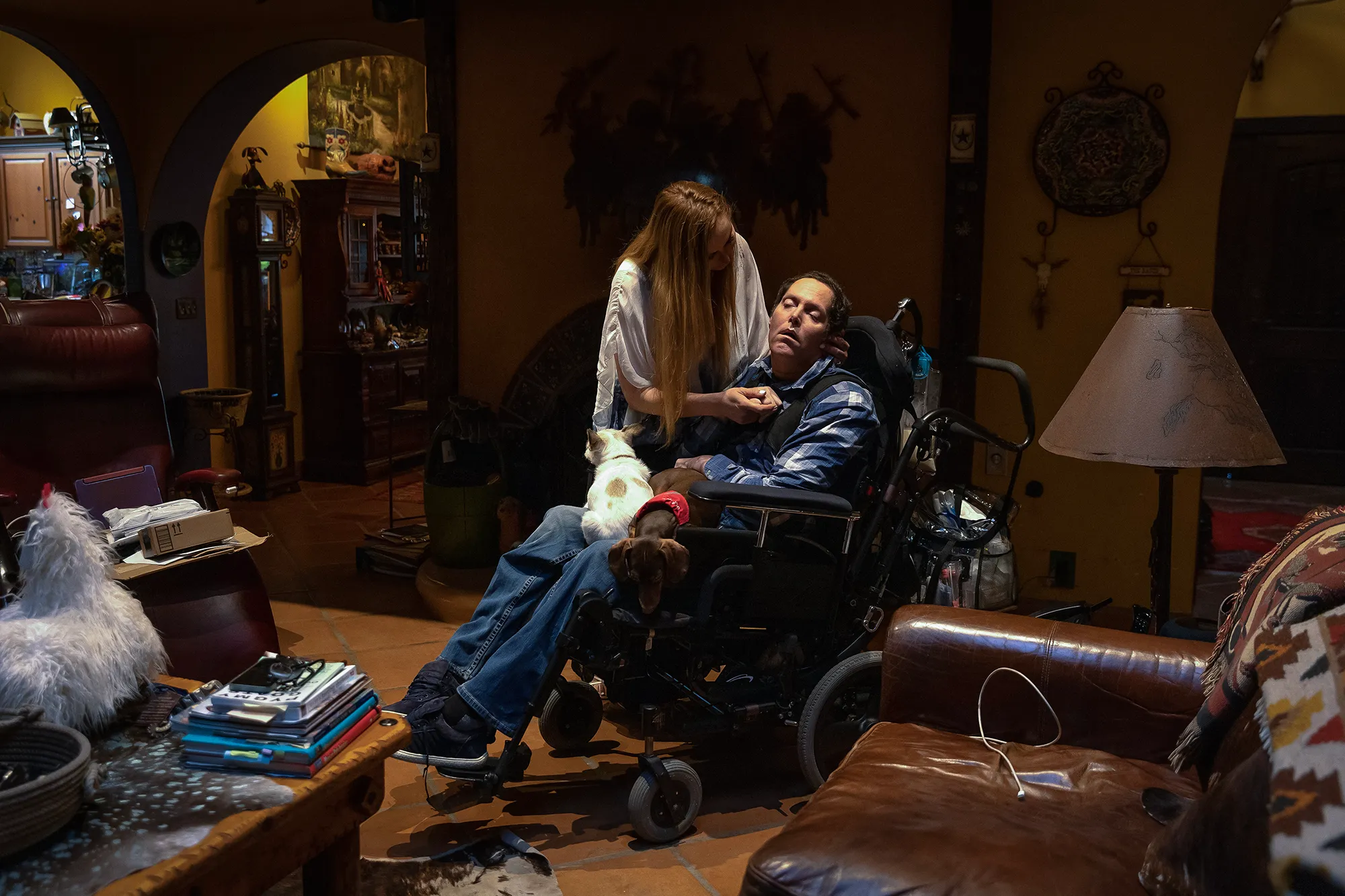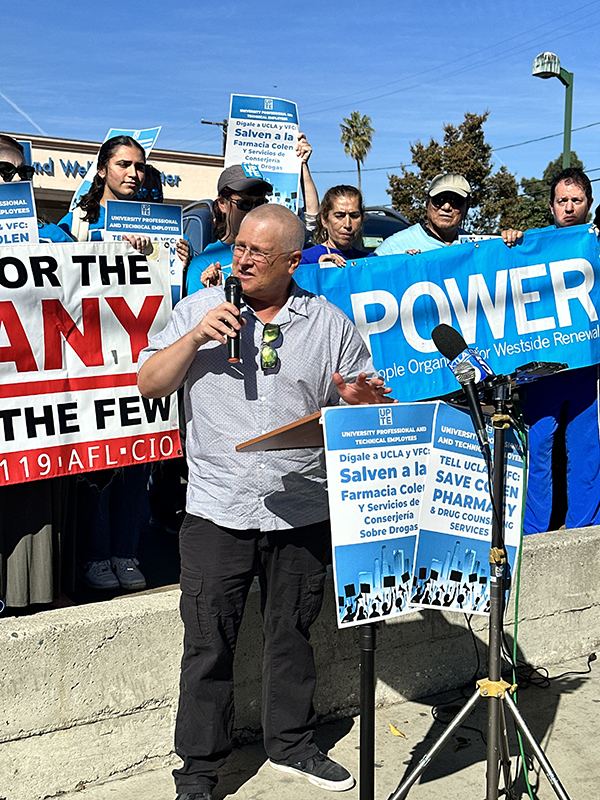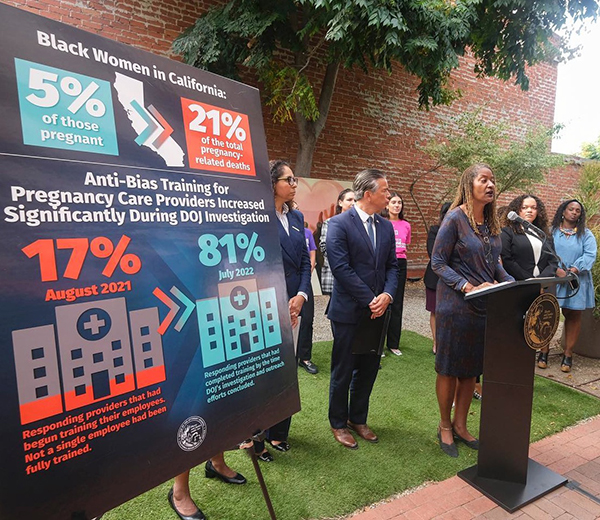ALZHEIMER’S DISEASE
By Darlene Donloe
Contributing Writer
For reasons unknown, Alzheimer’s disease is disproportionately impacting the Black community and after decades of studying and researching the stealthy, memory-stealing disease, the precise “whys” have left the medical community stumped.
“We are still trying to understand how it manifests and how it happens,” said Dr. Emnet Gammada, a clinical geriatric neuropsychology fellow at the UCLA Semel Institute of Neuroscience and Human Behavior. “What surprises me is how much we know and how much we don’t know.”
One in a series
Over the next two months, Contributing Writer Darlene Donloe iswriting a series of stories on the impact of Alzheimer’s on the Black community in Los Angeles and explore various aspects of the disease known as the “silent killer.”
The purpose of the bi-weekly series is to provide comprehensive up-to-date information about the disease, its symptoms, treatments, the latest medication, the cost of care, what to do upon getting a diagnosis, the importance of caregivers, connecting families to resources, exploring why Blacks are disproportionately diagnosed with the disease, and the role racism and discrimination play regarding access to equitable health care in underserved communities.
At one time Alzheimer’s disease was referred to as senility. It’s an unforgiving, irreversible, progressive type of dementia that slowly destroys memory, personality, thinking and behavior. Symptoms eventually grow severe enough to affect the ability to complete daily tasks or recognize loved ones. This goes beyond a “senior moment” or forgetfulness from time to time.
Alzheimer’s, which affects more than six million Americans, according to the Alzheimer’s Association, is the only disease among the top 10 causes of death in America that cannot be cured or prevented. It’s projected to nearly triple to 14 million Americans by 2060. One in three seniors dies with Alzheimer’s or another form of dementia.
For Blacks, who represent about 13.4% of the American population, Alzheimer’s is the fourth leading cause of death.
The Alzheimer’s Association lists 10 warning signs and symptoms of the disease: memory loss that disrupts daily life, challenges in planning or solving problems, difficulty completing familiar tasks, confusion with time and place, trouble understanding visual images and spatial relationships, new problems with words in speaking or writing, misplacing things and losing the ability to retrace steps, decreased or poor judgment, withdrawal from work or social activities and changes in mood and personality.
According to Alzheimer’s Los Angeles, the number of Californians living with Alzheimer’s will increase 30% by 2030. The organization notes that it is now the third leading cause of death for older women in Los Angeles County. The number for Blacks, specifically, is unknown.
Data from a comprehensive health assessment program study indicates 18.6% of Blacks and 14% of Hispanics age 65 and older have Alzheimer’s dementia compared with 10% of older white adults.
This higher risk, or incidence, of Alzheimer’s and other dementias, appears to stem from variations in medical conditions, health-related behavior and socioeconomic risk factors across racial groups. Despite some proof that the impact of genetic risk factors on Alzheimer’s and other dementias may differ by race, genetic factors do not account for the large variances in dominance or frequency among racial groups.
Instead, the difference in risk for Alzheimer’s and other dementias is explained by disparities in health conditions, socioeconomics and life experiences for older Black and Hispanic populations compared with older white populations.
“We need more examination,” said Cerise Elliott, program director for the Clinical Interventions and Diagnostics branch of the Division of Neuroscience at the National Institute on Aging. “We have to look at the societal structure and ideologies we have. The examination of racism has to be understood. The places we live and the social environment we live in effects our biology. I’m talking about the study of the life course.”
Several studies have suggested Blacks are disproportionately diagnosed with the disease, due to health factors that include high blood pressure, smoking, weight, alcohol, cholesterol, cardiovascular, diabetes, coronary diseases and more.
The good news is lifestyle intervention can slow down the progression of the disease and delay the development.
Alzheimer’s disease is not an inevitable result of aging. Doctors believe that those genetically predisposed can markedly delay it or show no evidence of it before they die through exercise, eating well, reducing stress and keeping the brain active with social, mental and physical stimulation.
“We can control our physical activity and what we eat,” said Petra Niles, senior manager for African American services, at Alzheimer’s Los Angeles. “We need to gain control over our blood pressure, blood sugar and cholesterol.”
Gammada, originally from Nekemte East Welega, a remote town in Ethiopia, agrees there are ways for everyone to obtain better brain health.
“Generally, for brain health, we need to exercise, get our heartbeat up, walk for 30 minutes,” said Gammada, who received her PhD. in 2020. “Do about 150 minutes a week. Also helpful is cognitive engagement — through conversations with loved ones. Talk about topics you’re passionate about. Social conversations provide cognitive stimulation.”
While Blacks are twice as likely to get the disease as their white counterparts, unfortunately, statistics show they are less likely to be diagnosed in a timely manner.
“For African Americans, they are usually diagnosed 15 years into the disease,” Niles said. “It could be a variety of things. Maybe there is a dismissal of signs and symptoms.”
Many factors come into play, according to Niles.
“We are at a higher risk for diseases,” she said. “We are at risk of so many things. It’s important to know that.
“It’s a challenge because so many diseases affect the community. This is one more,” Niles added. “The bad news is there are areas in our life that we don’t control like aging and genetics. Those are two critical areas that are important for African Americans to realize. An early diagnosis is key.”
Dr. C. Freeman, a geriatric psychiatrist, said Blacks are “offered treatments later and even ask for help later.”
“We need to confront this earlier, not later,” she said. “Where are the resources in the community? If we’re really going to confront this disease, resources need to be made available so we can access them.”
Dr. Nadine Diaz, a geriatric social worker at the USC Alzheimer’s Disease Research Center, agrees.
“The challenge I see is that we do not have enough community services where people of color live,” said Diaz, who has been involved in Alzheimer’s research since 2007. “I get calls all the time from African Americans asking where are Alzheimer’s diagnostic centers in South Central and other areas where Blacks live. This is L.A. and this is a challenge I see and struggle with when I engage and try to help people of color.”
There are several diagnostic centers around Los Angeles, but only one near South Central, the epicenter of the Black community. Alzheimer’s Los Angeles has a listing of centers on its website.
“We need more research and more services,” Diaz said. “I want services that are culturally competent, culturally sensitive and culturally proficient. We are not there yet as a city, state or as a nation.”
Niles said an ongoing conversation about the havoc Alzheimer’s is wreaking on the Black community is critical.
“Alzheimer’s is affecting and devastating the African-American community,” said Niles, who encourages the community to reach out to Alzheimer’s Los Angeles if they have needs or questions. “It affects the whole family. We have to face this head on because it’s not going away.
“We understand this can be an emotional time for everyone involved,” Niles added. “We’re here to offer assistance with whatever a family will need. When people call our hotline (844 435-7259), there is always a real person on the other end to assist them.”
Alzheimer’s is not a new disease. Doctors have known about it for more than 100 years. It was discovered in 1906, by German clinical psychiatrist Dr. Alois Alzheimer, for whom the disease is named.
At the time, he reported, “A peculiar severe disease process of the cerebral cortex.” He described a 50-year-old woman whom he had followed from her admission for paranoia, progressive sleep and memory disturbance, aggression, and confusion, until her death five years later.
His report noted distinctive plaques and neurofibrillary tangles in the brain histology. Alzheimer published three further cases in 1909 and a “plaque-only” variant in 1911. He was joined in his research by Dr. Solomon Carter Fuller, a Black neurologist, psychiatrist, and pathologist, who made a huge contribution to Dr. Alzheimer’s research. Their plaque findings would prove to be a critical breakthrough.
Dr. Keith Vossel, a professor of neurology at the David Geffen School of Medicine at UCLA, said the discovery of amyloid plaque has moved research forward.
“The biological cause of Alzheimer’s, we think we have some handle on it,” he said. “Amyloid plaque is the hallmark feature of Alzheimer’s that we can see in a brain section after someone has passed away. They form throughout the brain.
“Amyloid plaque and neurofibrillary tangles tau is a protein that forms inside of the cells,” Vossel continued. “All clinical trials have focused on amyloid and tau. We need to treat the amyloid-beta early. If someone has an amyloid-beta plaque in the brain, they are probably developing Alzheimer’s disease.”
One in eight persons who reach the age of 65 will be diagnosed with Alzheimer’s. By the time someone is 85, 47% will be diagnosed. By the time someone’s memory becomes compromised, the disease has already taken up residence for about 20 years.
Still, health care professionals remain hopeful regarding a cure.
“As a resident in neurology, someone told me not to go into Alzheimer’s because we’d have it licked in 10 years,” Vossel said. “I continue to be optimistic. We are realizing it’s more complicated than we thought it was.”
If you have questions you’d like answered by health care professionals, submit them to ddonloe@gmail.com. We will publish the answers in an upcoming installment.
Up Next: How racism and discrimination contribute to the lack of health care access for Blacks with Alzheimer’s. Also, the controversy behind aducanumab, the first new treatment approved by the Federal Drug Administration for Alzheimer’s since 2003.
This article was produced as part of a project for the USC Annenberg Center for Health Journalism California Fellowship.













